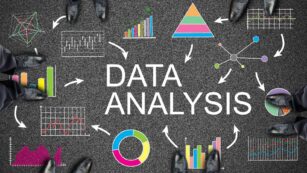Diving into intermediate Python projects is a thrilling step for any budding programmer looking to sharpen their coding skills and enhance their problem-solving abilities. These projects not only solidify foundational knowledge but also push one’s limits and expand their understanding of Python’s vast capabilities. From building web applications to data analysis, intermediate projects offer a perfect blend of challenge and learning.
As programmers progress from basic syntax and scripts to more complex structures, they encounter real-world problems that require more sophisticated solutions. Engaging with these projects helps bridge the gap between theory and practical application, making the learning process both exciting and effective.
Intermediate Python Projects
Bridging the Gap Between Beginner and Advanced Levels
 Engaging in intermediate Python projects allows programmers to transition smoothly from beginner to advanced levels. These projects strike a perfect balance, offering challenges that are neither too simple nor exceedingly complex. For example, building a web scraper or developing a simple machine learning model helps programmers apply basic Python syntax and libraries in more dynamic ways. These projects introduce developers to error handling, data structures, and more sophisticated algorithms, laying a firmer foundation for advanced programming.
Engaging in intermediate Python projects allows programmers to transition smoothly from beginner to advanced levels. These projects strike a perfect balance, offering challenges that are neither too simple nor exceedingly complex. For example, building a web scraper or developing a simple machine learning model helps programmers apply basic Python syntax and libraries in more dynamic ways. These projects introduce developers to error handling, data structures, and more sophisticated algorithms, laying a firmer foundation for advanced programming.
Reinforcing Programming Concepts
Intermediate Python projects reinforce programming concepts by requiring their practical application. When a developer works on creating an API or a personal finance manager, they not only utilize loops, functions, and conditions but also enhance their understanding of these elements in real-world scenarios. Such applications solidify knowledge and improve one’s ability to debug and optimize code, crucial skills for any software developer. These projects often require integrating multiple programming concepts, which deepens a developer’s problem-solving skills and bolsters their confidence in handling complex tasks.
Popular Types of Intermediate Python Projects
Web Applications with Flask or Django
 Intermediate Python projects often involve the development of web applications, allowing developers to engage practically with two powerful frameworks: Flask and Django. Flask, being a micro-framework, is excellent for those aiming to have more control over the components they use. It enables developers to build a web application from scratch with the necessary features, ideal for those who appreciate finer details in their project work. On the other hand, Django offers a more holistic approach with its built-in features for developing complex web applications rapidly. It’s particularly beneficial for projects that require database integration, authentication systems, and content administration. By creating web applications with these frameworks, developers not only enhance their backend programming skills but also deepen their understanding of how web technologies work together.
Intermediate Python projects often involve the development of web applications, allowing developers to engage practically with two powerful frameworks: Flask and Django. Flask, being a micro-framework, is excellent for those aiming to have more control over the components they use. It enables developers to build a web application from scratch with the necessary features, ideal for those who appreciate finer details in their project work. On the other hand, Django offers a more holistic approach with its built-in features for developing complex web applications rapidly. It’s particularly beneficial for projects that require database integration, authentication systems, and content administration. By creating web applications with these frameworks, developers not only enhance their backend programming skills but also deepen their understanding of how web technologies work together.
Data Visualization and Analysis
Engaging in data visualization and analysis projects is another prominent type of intermediate Python project. These projects typically involve using libraries such as Matplotlib, Seaborn, or Pandas to create visual representations of data. Through these tasks, developers improve their ability to manipulate and analyze data, extracting meaningful insights from complex datasets. Whether it’s creating histograms, scatter plots, or dynamic dashboards, each project helps refine critical skills, such as statistical analysis and predictive modeling. Moreover, these types of projects are immensely helpful for those looking to enter data science or analytics fields. For example, when handling large datasets, it’s essential to understand how to migrate data effectively, such as using tools to migrate Postgres data to Iceberg, which can enhance the scalability and performance of your analysis. Through consistent practice, one can master the art of turning raw data into actionable knowledge, a sought-after skill in many industries.
Tips for Successfully Compleating Intermediate Python Projects
 Tackling intermediate Python projects is a strategic move for any developer looking to solidify their coding skills and advance their career. To ensure success, they should start by choosing projects that align with their interests and career goals which will maintain motivation and relevance. It’s also crucial to apply best practices such as writing clean, well-documented code and actively seeking feedback from more experienced peers.
Tackling intermediate Python projects is a strategic move for any developer looking to solidify their coding skills and advance their career. To ensure success, they should start by choosing projects that align with their interests and career goals which will maintain motivation and relevance. It’s also crucial to apply best practices such as writing clean, well-documented code and actively seeking feedback from more experienced peers.
By regularly pushing their boundaries, developers not only enhance their technical abilities but also gain invaluable practical experience. These projects serve as a proving ground for mastering the intricate balance between theory and real-world applications. Whether it’s developing dynamic web applications or analyzing complex datasets the skills honed during these projects are essential for any aspiring software professional. Embrace the challenge and watch as your proficiency and career prospects soar.


